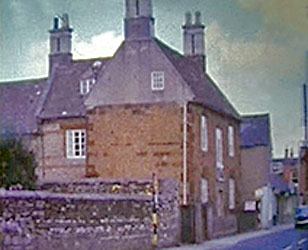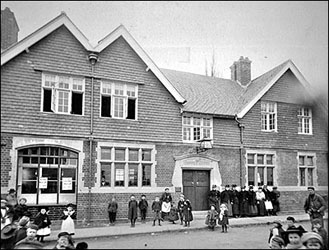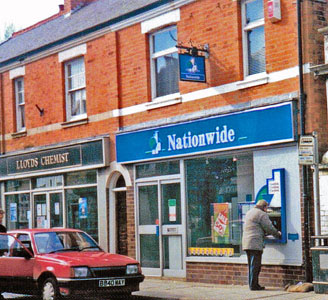John Meads 2015 |
|||
|
|||
| The first mention of banking facilities in Burton Latimer is contained in the 1896 Annual Report of the Stamford, Spalding & Boston Banking Company which states that the company had set up an agency in Burton Latimer the previous year. There are entries in the 1898 Kelly's Directory which lists William F Neilson as the manager of the Stamford, Spalding & Boston Banking Company's agency and Thomas G. Fraser as the manager of the Northampton Union Bank in the village. They would have travelled here from Kettering once a week to open an office in a room hired for the purpose. Denton's Farm in the High Street, now demolished, is known to have been used by a bank but it is not clear which of two banks was housed here. The Stamford, Spalding & Boston Bank was aquired by Barclays in 1911 and in a publication entitled: 'The Industrial Advantages of Burton Latimer' probably promoted by the new Urban District Council in 1923, the following paragraph appears: "Banks - The National Provisional Bank have a local branch which is open on Tuesdays and Fridays, worked from their Kettering office. Messrs. Barclay's who have been attending the town on Mondays, Wednesdays and Fridays have recently purchased the modern buildings erected by the Coffee House Ltd. These buildings will be converted into a bank, and a resident manager will reside on the premises, and daily facilities will be available. Barclay's used this building until December 2017 when it closed, leaving Burton Latimer without a bank for the first time in over one hundred and twenty years. Successive managers lived with their families in the accommodation provided above the bank, or on the ground floor to the right of the main central door. However, there has been no resident manager since about 1980. The Post Office leased the ground floor rooms on the right of the main door from c1960 to 1975 and shared the main door.
For a brief period between 1878 and 1895 there was a Burton Latimer and Neighbourhood Freehold Benefit Building Society, set up by a group of working men to help provide finance for those of their number who wished to buy the houses that were springing up in the area then known as the "New Town Building Estate" which we now know as Duke Street, Alexandra Street and Finedon Street and Rosebery Street, Spencer Street and Newman Street. |
|||


